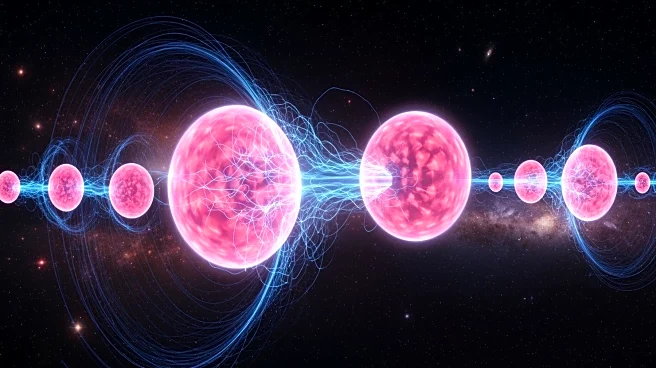What's Happening?
Physicists at CERN and MIT have successfully used electrons to probe the nucleus of a molecule, specifically radium monofluoride (RaF), revealing the Bohr-Weisskopf effect for the first time in a molecule.
This effect, which describes how magnetism is distributed within a nucleus, was observed during a study aimed at measuring the energy spectrum of RaF. The molecule, created at CERN's ISOLDE facility, is composed of radium and fluoride atoms, with the radium nucleus exhibiting octupole deformation, making it an ideal candidate for studying asymmetries that could indicate new physics beyond the Standard Model.
Why It's Important?
The discovery of the Bohr-Weisskopf effect in a molecule opens new avenues for precision measurements that could uncover small asymmetries in nature, potentially revealing physics beyond the Standard Model. This research enhances the understanding of nuclear magnetism and could lead to breakthroughs in fundamental physics. The ability to probe inside a molecule's nucleus using electrons offers a novel method for studying the internal properties of atomic nuclei, which could have implications for future scientific research and technological advancements.
What's Next?
Researchers plan to slow and trap RaF molecules with lasers to perform even more precise measurements. This approach could help identify smaller effects that break nature's symmetries, furthering the search for new physics. The study's findings suggest that molecules like RaF could be powerful tools for exploring fundamental questions in physics, potentially leading to new discoveries about the universe's underlying principles.
Beyond the Headlines
The ability to detect the Bohr-Weisskopf effect in molecules challenges existing assumptions about nuclear interactions and could lead to a reevaluation of how scientists study atomic structures. This breakthrough highlights the importance of interdisciplinary collaboration in advancing scientific knowledge and underscores the potential for innovative techniques to transform our understanding of complex phenomena.











